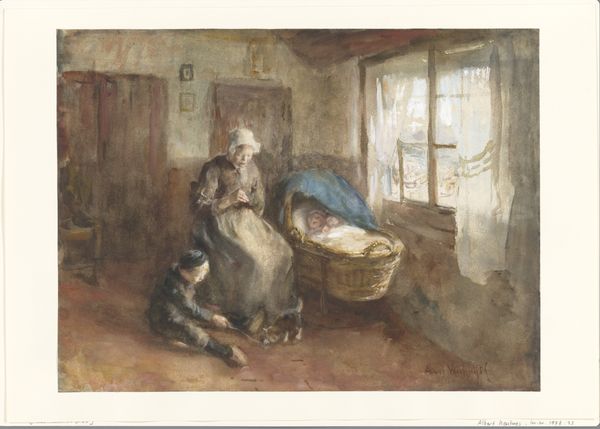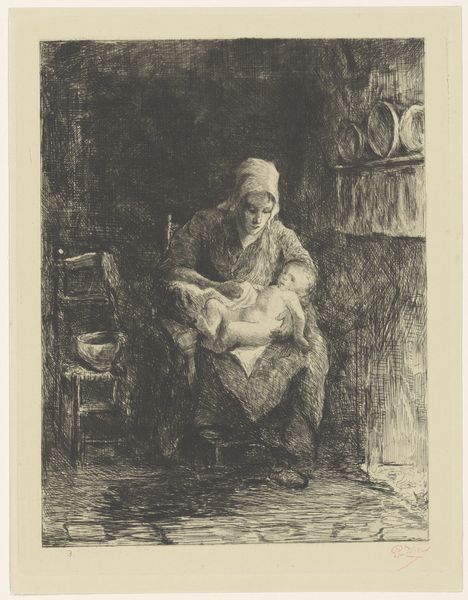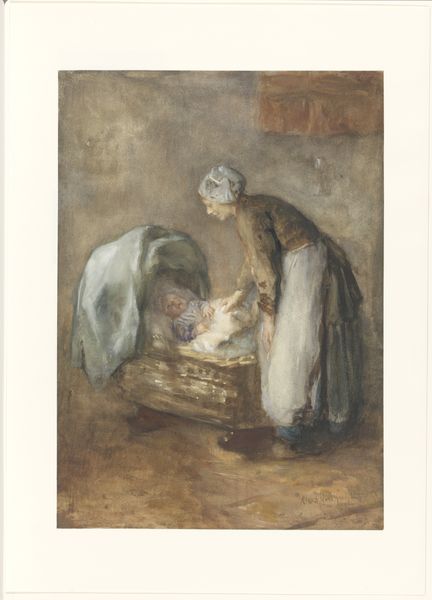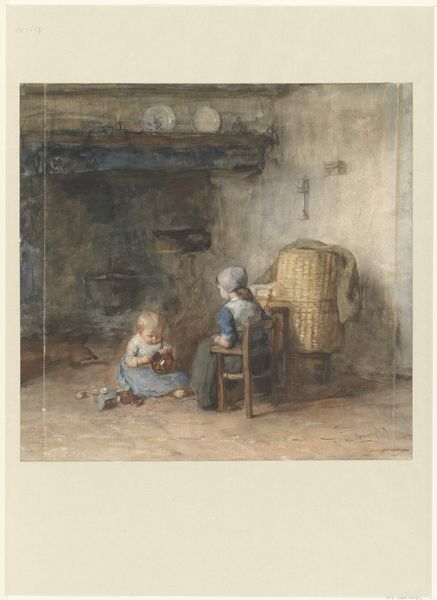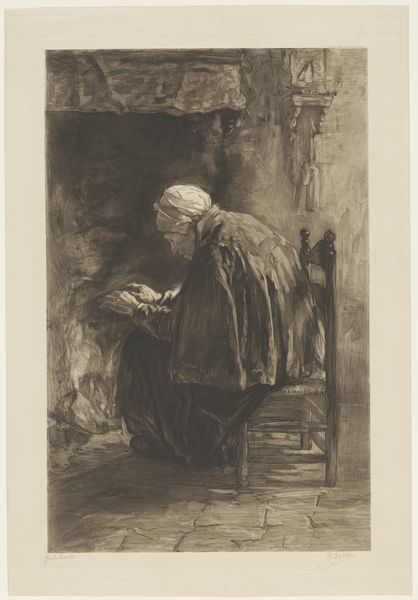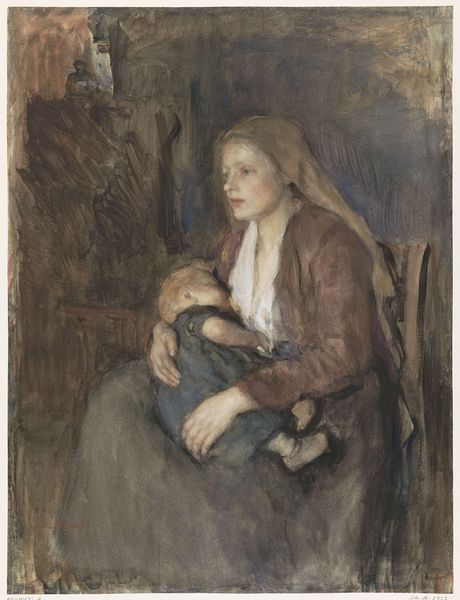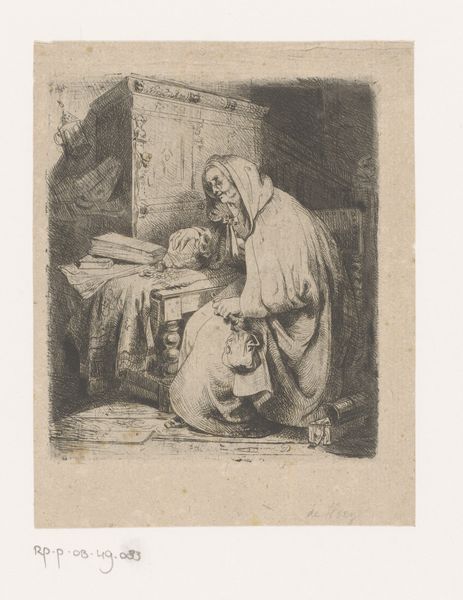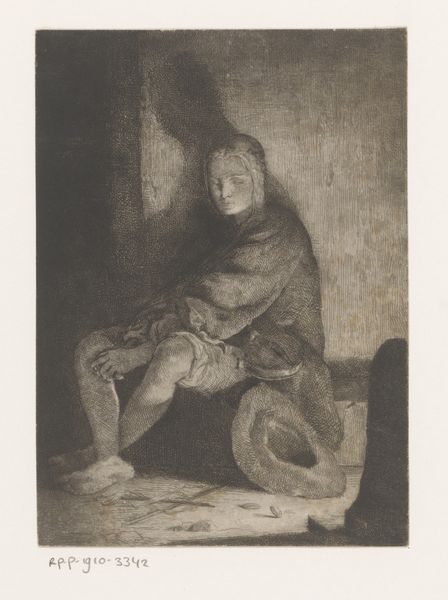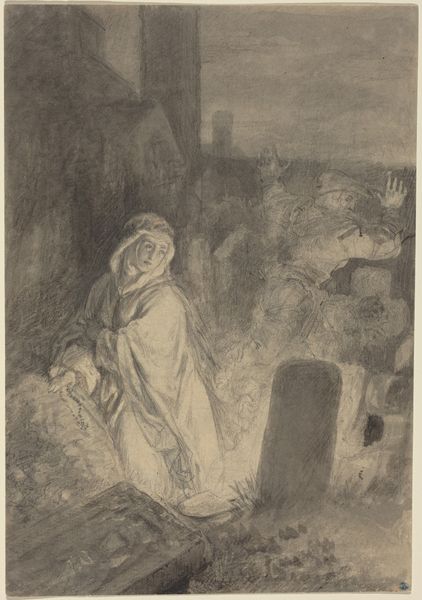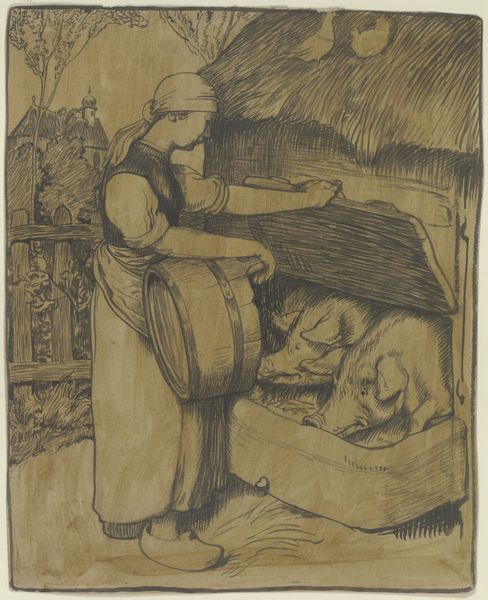
painting, watercolor
#
portrait
#
medieval
#
painting
#
impressionism
#
watercolor
#
genre-painting
#
watercolor
#
realism
Dimensions: height 437 mm, width 321 mm
Copyright: Rijks Museum: Open Domain
Curator: It evokes a sense of quiet intimacy. The colors are muted, and the light is so soft… it almost feels like a memory. Editor: Indeed. We’re looking at "Moeder zoogt haar kind bij de haard", or "Mother Nursing her Child by the Hearth," attributed to Albert Neuhuys, though the date remains somewhat ambiguous, placing its creation sometime between 1854 and 1914. The artwork is preserved here at the Rijksmuseum. What stands out for me is the stark contrast between the vulnerability of the nursing mother and the darkness of the hearth. Curator: The hearth as the source of life and warmth is a classical motif, almost primordial in its symbolism. In the depths of the painting, you can make out what appears to be a cauldron or a vessel over the hearth itself; water becomes part of a very simple formula—fire and water representing, perhaps, earthly needs, purification and earthly provision for the life being sustained. Editor: You’re right, it presents an interesting contrast. The stark realism, especially within a domestic space, suggests this might be the artist reflecting shifts towards valuing ordinary life in art during that period. There’s no gilding of the subject or its immediate context: an unremarkable woman tending to fundamental aspects of life: providing nourishment, seeking comfort in shelter from the environment outside. Curator: Right! This scene touches something fundamental, I think. And it isn’t just about a mother feeding her child; I can’t help but note that nursing can symbolize generosity and selfless giving…It carries immense weight that stretches back centuries into the depiction of motherhood in religious imagery too. There's also an archetypal serenity found often in depictions of maternal care throughout art history. The continuity of the visual trope offers stability—a message we need time and time again in culture. Editor: Absolutely. Beyond just this specific scene, it is the universal language that speaks volumes about women in 19th century European societies as pillars and protectors whose images and roles served national agendas in the face of widespread socio-political shifts across this era. Curator: This watercolor painting really underscores the power that quiet art holds. Even today. Editor: And how it holds a mirror to our values through these symbolic interpretations.
Comments
No comments
Be the first to comment and join the conversation on the ultimate creative platform.
